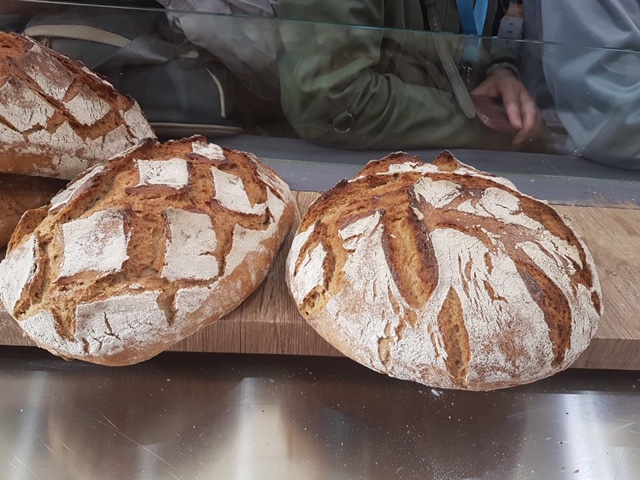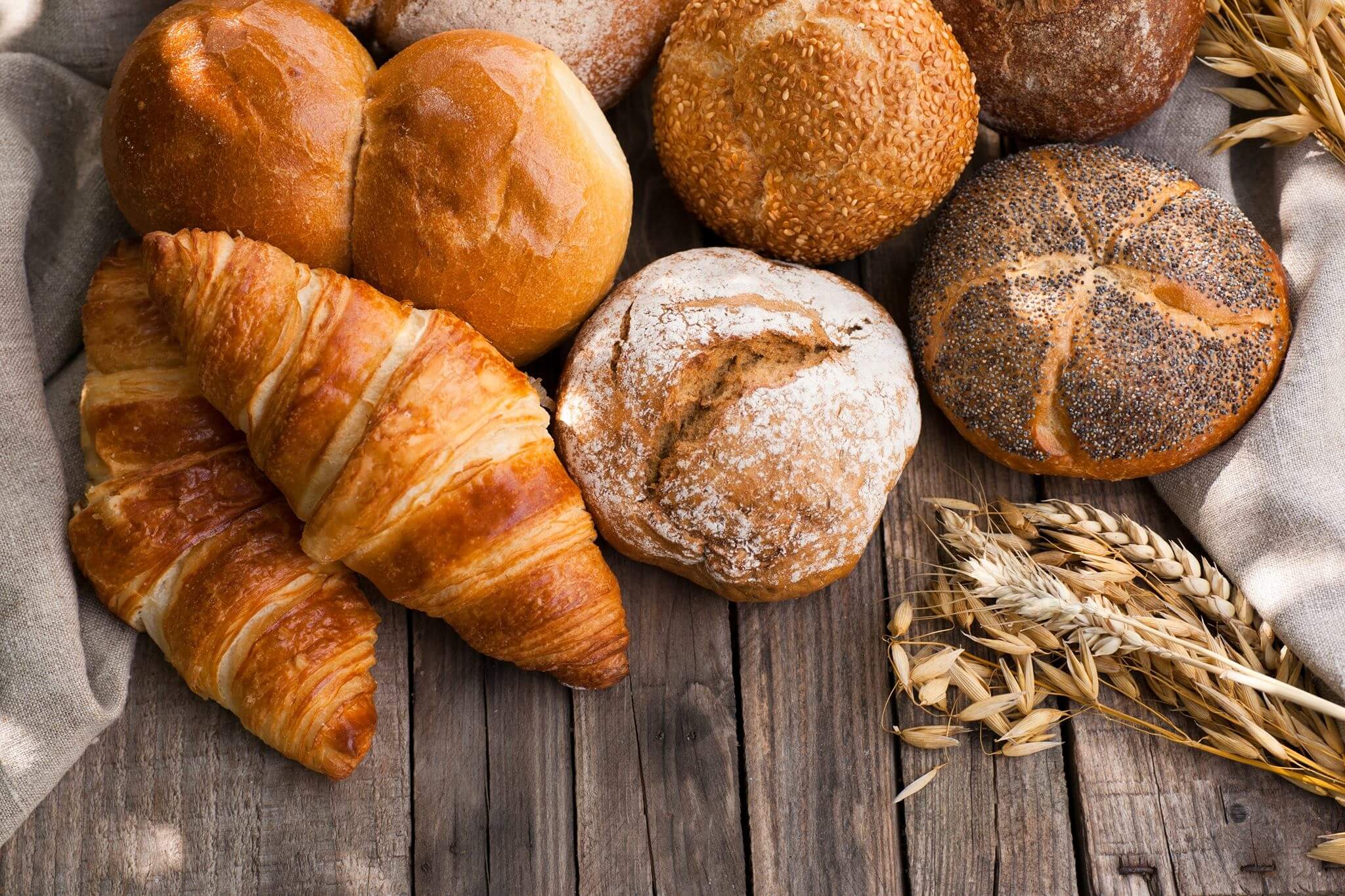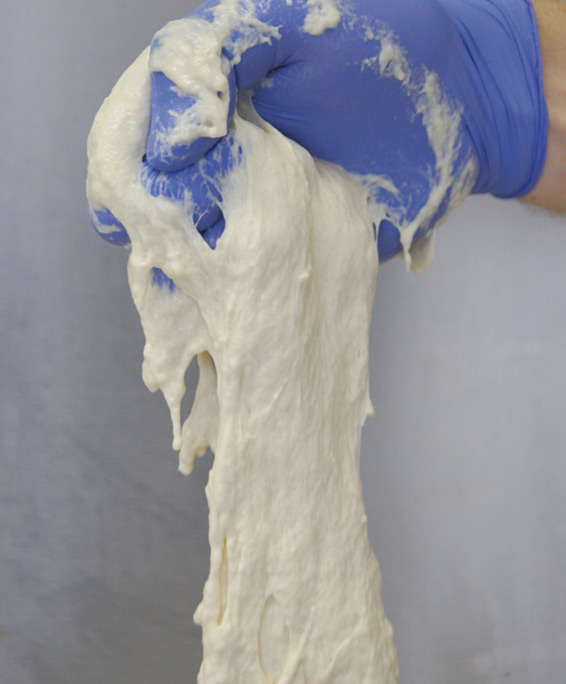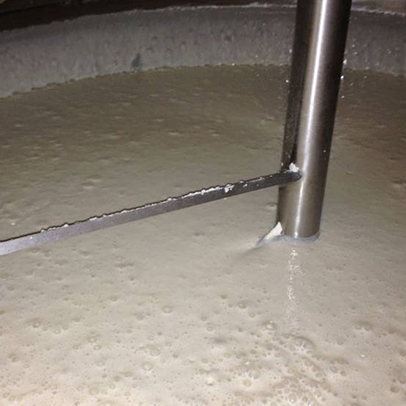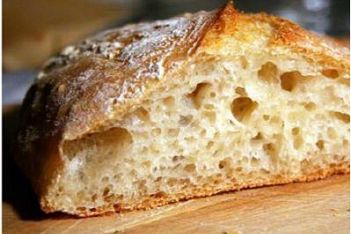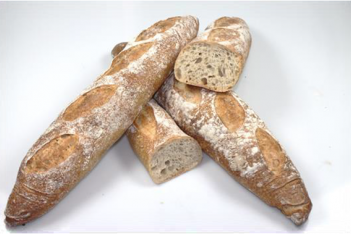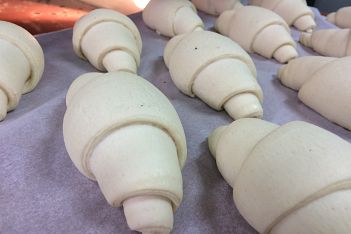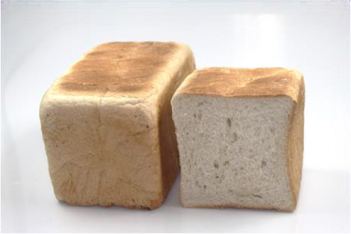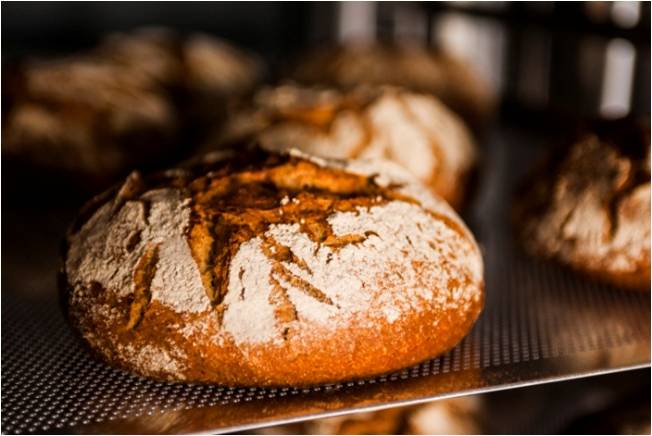Predough with fermentation
Technology of predough, based on traditional methods and experiences, is being reintroduced into modern baking production, due to numerous beneficial effects on the production process and product quality.
Extensive knowledge and experience in the field of process management and many options, offered by modern processing equipment, enable the implementation of pre-dough technology in practically any bakery. Ultimately, this pays off due to more rational consumption of raw materials and offers the possibility to develop unique recipes and better product recognition in the market.
A predough is prepared in advance, from a part of particular ingredients from the main recipe. After a certain time, in which it develops to a maturity phase, suitable for further processing, we mix it with the remaining ingredients from the recipe into the final dough.
The main purpose of predough is to improve baking ability of selected ingredients and to promote raising. Depending on the type and method of conducting the process, predough affect the taste, aroma, volume, core and crust of the product, freshness, shelf-life… Due to good water-binding, the dough with added predough will be more elastic, less sticky and even more suitable for forming with machines.
The desired effect depends on the raw materials we work with and the end result we wish to achieve.
In general, predoughs are divided into 2 groups:
1. Microbiologically conducted prodoughs, based on fermentation, described below
2. Predough without fermentation: click HERE for more information
In the preparation of PREDOUGH WITH FERMENTATION, to achieve the appropriate physical and chemical effects and characteristic organoleptic properties of the product, we use the action of beneficial microorganisms. Microorganisms are added in the form of selected cultures or starters, vintage traditional methods mainly take advantage of the action of microorganisms that are already naturally present on the raw material.
We distinguish between yeast predoug or sponge and and sour predoughs. The difference is in the used raw materials, the process conduction and the microorganisms involved, as well as their metabolites that affect the acidity and other organoleptic or physical and chemical properties of the dough.
Yeast predough or sponge in short is prepared from a mixture of wheat flour and water in the ratio flour:water = 1: 1 to 1.5. Baking yeast is added to the mixture, which in this case is a starter.
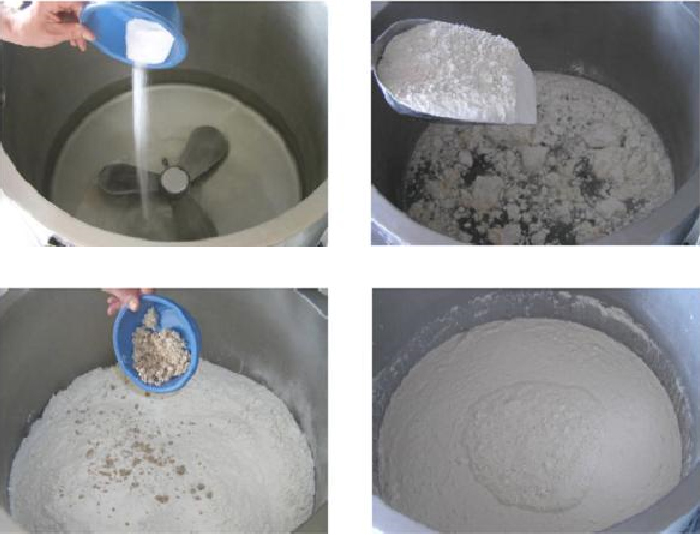
With yeast predoughs, we primarily affect the water absorption and the raising effect. Mature wheat predoughs have a mild, neutral, sometimes slightly sour taste. The main products of yeast activity are ethanol and CO2 which plays an important role in raising and creating product volume. Wheat predoughs are added mainly to products where a sour note is not desirable and where we want to increase the volume. It is usually prepared from 15-40% of wheat flour intended for the entire batch, and when determining the ratio, we have to take into account the quality of gluten.
Theoretical parameters for yeast predough:
- DY (TA) 200 – 250
- Fermentation temperature: 20 – 28°C
- Fermentation time: 6 – 12 h (depending on temperature and DY)
- Yeast dosage: 0,2 – 2 %.
- Cooling after the process: 12 – 15°C, stability: up to 12 h, chilled.
- pH: 5 – 6, Acidity: < 4.
SOURDOUGHS with fermentation, prepared from wheat or rye flour are widespread in our region. Recently, sourdough based on spelt flour as well as on rice flour for baking gluten-free products, has been increasingly implemented.
Due to its mild sour taste, wheat sourdough, prepared using lactic acid bacteria, is useful in the production of white and mixed wheat bread, where a pronounced sour note of bread is undesirable. For the same reason, wheat sourdough also works great in the production of wholegrain products. Even in countries that were once considered strongholds of intensely flavored sour rye bread, breads with added milder wheat sourdough are becoming increasingly popular.
Wheat sourdough is prepared from 7 to 15% of wheat flour intended for the whole batch in order to influence the taste and aroma, elasticity of the core and to improve freshness and durability. Some types of lactic acid bacteria, due to their good gas formation properties, perfectly complement the action of yeast. The amount of added yeast can thus be reduced.
The line between wheat predough and wheat sourdough is very vague and often cannot be easily determined. Even with predoughs prepared using yeast, substances that lower the pH are formed: enzymatic decomposition of flour, dissolution of CO2, the activity of naturally occurring microorganisms…
The complete opposite are rye sourdoughs, aromatic and of extremely sour taste.
Acidification of rye flour is a necessary technological process in the preparation of rye bread to ensure proper baking properties. Wheat flour proteins contain gluten, capable of binding water and forming the structure of a protein grid that retains the gases produced during fermentation and gives the products their volume and elasticity. Rye flour proteins are not capable of this.
However, people in the areas where rye thrived the most, learned to bake good bread using even the rye flour. Pentosans and starch, which bind water well and soak well in an acidic environment, play a similar role as gluten in wheat bread. The acidic environment also restricts the action of flour enzymes, especially amylase, which inhibits starch breakdown and further affects the creation of the typical texture of rye bread.
Predough is a diverse microcosm. If we manage to understand it properly, it generously gives back.
There are several types of yeast, and simultaneously there are several types of lactic acid bacteria.
Each type of microorganism has its own specific action, producing numerous metabolites that change the chemical and physical properties of the dough in different ways, thus affecting the organoleptic properties of the product.
Apart from beneficial microorganisms that we add in the form of starters, there are many other types of microorganisms that are already naturally present in milling products or are later found in them (processing, contamination…). The composition of the microbial association of raw materials for dough preparation, from different crops to prepared flour and seeds, differs in terms of variety, position, harvest, weather conditions during growth and harvest, processing methods and transport and storage conditions. Apart from beneficial microorganisms, various harmful molds that produce afla-toxins can be found in grains…
The remaining raw materials, as well as equipment and the environment are also sources of foreign microorganisms. When certain conditions are met, foreign microorganisms can dominate and, by their action, negatively affect the taste and physical and chemical changes of predough, and inhibit or block the action of beneficial microorganisms.
Implementation of predough and sourdough into production
A prerequisite for achieving the set goal is understanding and proper management of fermentation, which gives the desired, reliable and reproducible results.
Once we decide to implement predough into production, we first need to determine what we expect from the technology, which products we want to change and in which way. It is best to choose the procedure in a targeted manner, keeping in mind the end results.
Some also opt for traditional predough preparation, without adding any starters, but by taking advantage of the action of the natural flour microbial association.
By establishing appropriate conditions, strict hygienic measures and taking into account possible external influences, this is, of course, feasible. However, we can never completely rule out the influence of the condition and changing composition of the flour microbial community, which is susceptible to environmental factors as it is transferred from the field to our mixer.
In order to achieve reliable and reproducible results, we recommend the use of selected microbiological cultures or starters.
DIOSNA DIOStart® starters are characterized by excellent condition. Several different types are available for different flavors and processing of different types of flour. They are all BIO certified.
In the baking production, the preparation of predough and sourdough is carried out in special devices called fermenters. Inside these, predough is under control, and it is possible to measure and adjust the temperature, mixing, cooling, transfer and convenient storage. They are made so that they can be easily and efficiently cleaned. For larger systems, automatic cleaning systems (PIG, CIP) are provided.

